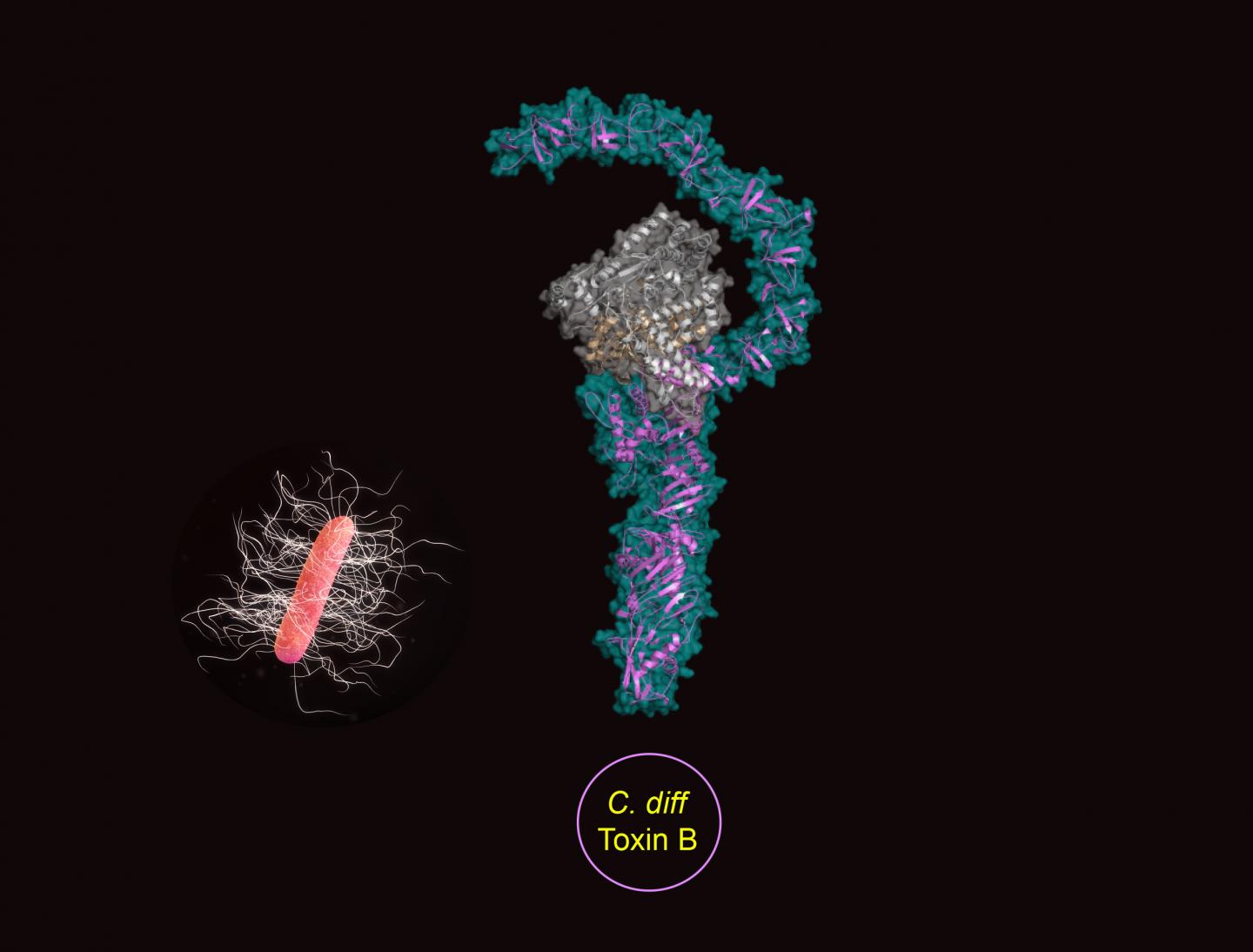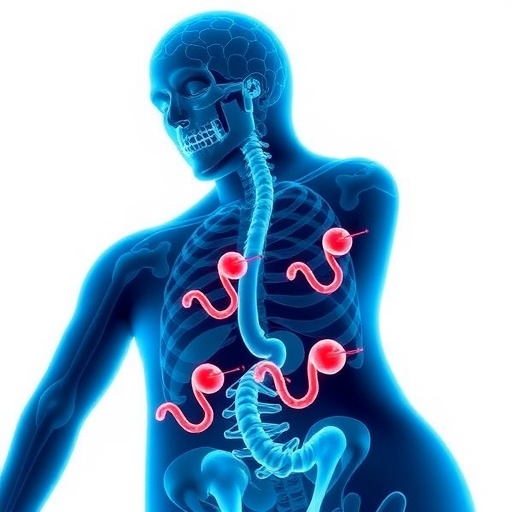Discovery may lead to new therapeutics and vaccines aimed at fighting the deadly disease

Credit: UCI School of Medicine
A new study, led by researchers from the University of California, Irvine (UCI), uncovers the long-sought-after, three-dimensional structure of a toxin primarily responsible for devastating Clostridium difficile infection (CDI).
Published today in Nature Structural & Molecular Biology, the study titled, “Structure of the full-length Clostridium difficile toxin B,” sheds light on the weaknesses of TcdB, one of the toxins secreted by the Clostridium difficile (C. diff) bacteria and the main cause of CDI.
“This is the first time we could directly see the 3D structure of the gigantic TcdB holotoxin at a near atomic resolution,” said Rongsheng Jin, PhD, a professor in the Department of Physiology & Biophysics at UCI’s School of Medicine and the senior author in the study. “Interestingly, this toxin shapes like a question mark when viewed from a certain angle, and it has been a major question for us as we seek ways to fight the toxin and CDI.”
Also included in the study, the team demonstrated how three antibodies could neutralize TcdB, revealing intrinsic vulnerabilities of the TcdB toxin that could be exploited to develop new therapeutics and vaccines for the treatment of CDI.
C. diff is an opportunistic pathogen that establishes in the colon when the gut microbiota are disrupted, often seen in severely ill or elderly patients in hospitals or in long-term care facilities. CDI has become the most common cause of antibiotic-associated diarrhea and gastroenteritis-associated death in developed countries, accounting for half-million cases and 29,000 deaths annually in the US. It is classified as one of the top three “urgent threats” by CDC. The current standard of care for CDI involves treatments using broad spectrum antibiotics that reduce the level of C. diff bacteria, but also kill the good bacteria in the gut and disrupt the normal gut microbiome. This approach often leads to frequent disease recurrence (up to 35%).
Recently, the Food and Drug Administration (FDA) issued a warning about an investigational fecal microbiota for transplantation (FMT) procedure for CDI treatment following the death of patient in a clinical trial. In another action, the FDA approved Bezlotoxumab, a TcdB-neutralizing human monoclonal antibody, as a prevention against recurrent infection.
“There remains a desperate need for more potent and cost-effective therapies for CDI,” said Jin. “The good news is, the 3D structure of TcdB we have identified literally provides a blueprint for the development of next-generation vaccines and therapeutics that have enhanced potency and broad-reactivity across different C. diff strains.”
Already the UCI team is working on a novel vaccine based on the new structure. Early studies show promising results, which Jin hopes to publish soon. In the meantime, The Regents of the University of California has filed a patent on their work.
###
Researchers contributing to this study include Peng Chen, Kwok-ho Lam, Zheng Liu, Baohua Chen, Craig B. Gutierrez, Lan Huang and Rongsheng Jin from UCI; Frank A. Mindlin and Mark Bowen from Stony Brook University; Yongrong Zhang, Therwa Hamza and Hanping Feng from the University of Maryland; Tsutomu Matsui from Stanford Synchrotron Radiation Lightsource; and Kay Perry from the Argonne National Laboratory. The study was supported by funding from the National Institute of Health and the U.S. Department of Energy.
About the UCI School of Medicine: Each year, the UCI School of Medicine educates more than 400 medical students, as well as 200 doctoral and master’s students. More than 600 residents and fellows are trained at UC Irvine Medical Center and affiliated institutions. The School of Medicine offers an MD; a dual MD/PhD medical scientist training program; and PhDs and master’s degrees in anatomy and neurobiology, biomedical sciences, genetic counseling, epidemiology, environmental health sciences, pathology, pharmacology, physiology and biophysics, and translational sciences. Medical students also may pursue an MD/MBA, an MD/master’s in public health, or an MD/master’s degree through one of three mission-based programs: the Health Education to Advance Leaders in Integrative Medicine (HEAL-IM), the Leadership Education to Advance Diversity-African, Black and Caribbean (LEAD-ABC), and the Program in Medical Education for the Latino Community (PRIME-LC). The UCI School of Medicine is accredited by the Liaison Committee on Medical Accreditation and ranks among the top 50 nationwide for research. For more information, visit som.uci.edu.
Media Contact
Anne Warde
[email protected]
Related Journal Article
http://dx.




